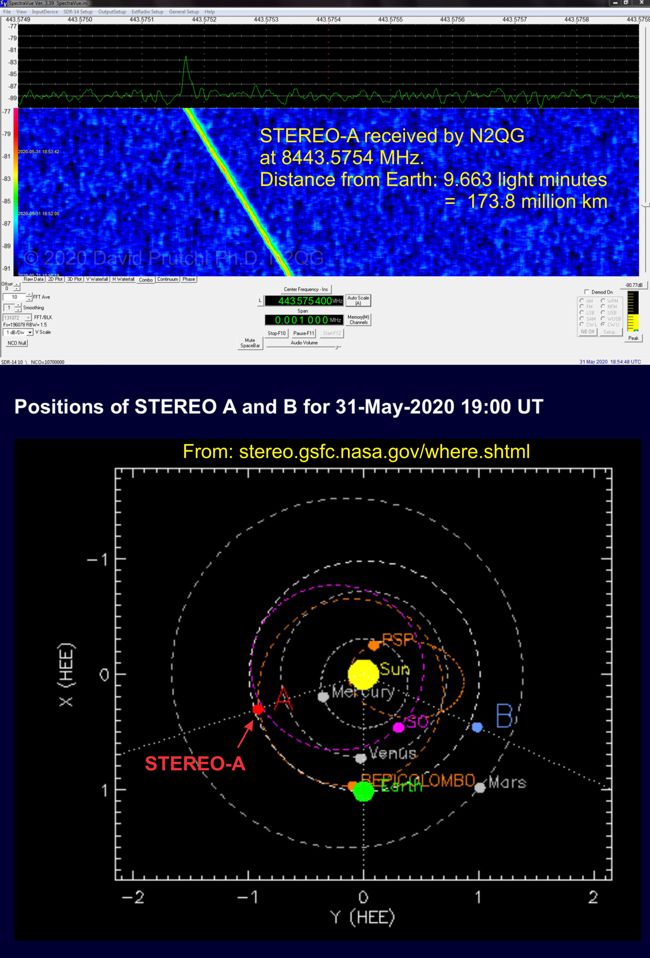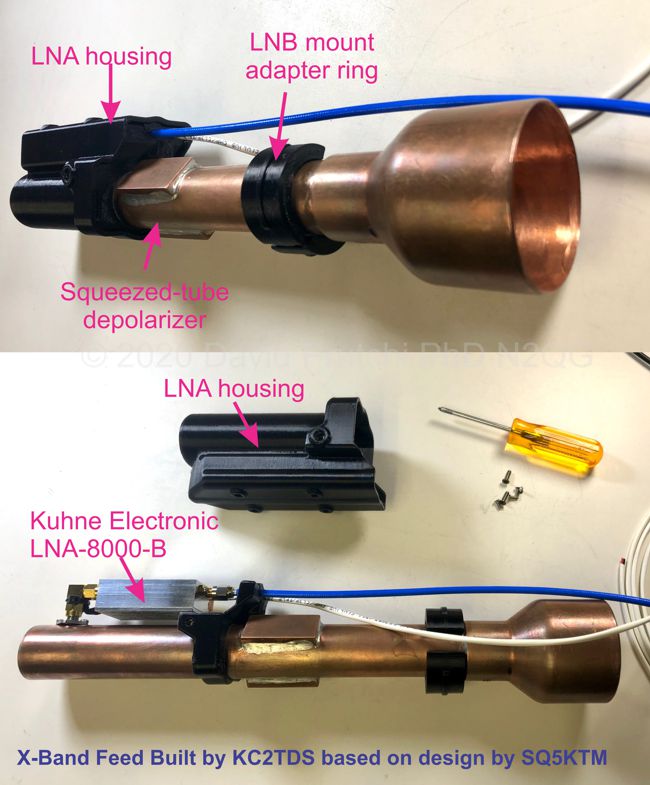This weekend’s detection: STEREO-A received on X-band using 1.2m offset dish:

Cutting-edge diy projects
This weekend’s detection: STEREO-A received on X-band using 1.2m offset dish:


Today I was able to receive my first true-DSN X-band DX from Bepi-Colombo at a distance of 15.2 million km (around 9.5 million miles) away from Earth!
The squeezed-tube feed was made by Jason Meyers KC2TDS based on a design by Micha? Zawada SQ5KTM :

IMPORTANT UPDATE 1 June 2020: Please see https://www.prutchi.com/2020/06/01/probe-location-for-squeezed-tube-x-band-dsn-feed/ for the correct probe orientation!
The signal was received with the feed mounted on a 1.2m f/d=0.6 offset dish steered by a Yaesu G-5500 az/el rotator:

There is a Kuhne LNA-8000B low-noise amplifier connected directly to the probe, and the amplified signal is sent to the downconverter (LO=8GHz) mounted on the boom.

Downconverted signals (400 – 450 MHz) are received using an AOR AR-5000. The radio’s IF is sampled by a SDR-14 and displayed with SpectraVue.
Tracking of the probe is with PstRotator’s new DSN feature which downloads ephemeris data straight from NASA JPL’s Horizons:


I received a squeezed-tube depolarizer and super Kumar scalar ring from Paul M0EYT (from uhf-satcom.com). Jason KC2TDS terminated it with a waterjet-cut copper disk and added a probe which he carefully tuned with the VNA to get <20dB return loss in the 8.4 to 8.45GHz DSN band.
My plans for this weekend are to take down the 23cm EME feed from the 3.5m dish and test this feed after taking some measurements with the horn that Jason KC2TDS built based on Michal SQ5KTM’s design.
IMPORTANT UPDATE 1 June 2020: Please see https://www.prutchi.com/2020/06/01/probe-location-for-squeezed-tube-x-band-dsn-feed/ for the correct probe orientation!

I finally got around to building a 3.5-turn helical feed for the 1.2m offset dish to receive S-Band satellite and DSN signals. VSWR is quite OK (1.5:1 to 1.6:1) within the Near-Earth and Deep-Space S-band (2.2 to 2.3 GHz):

This feed works much better than the PCB LPA with which I started my experiments. Here is USA159 (DSP-21):
